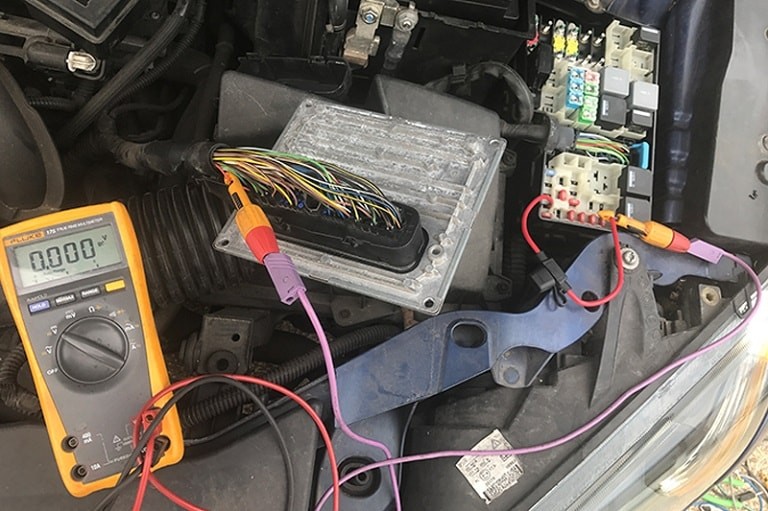The Diagnostic Trouble Code (DTC) U1900 in Ford vehicles often leads to a no-start condition and can be frustrating to diagnose. This code indicates a communication fault within the vehicle’s network, specifically related to the instrument cluster module (ICM) or the anti-theft system. While a faulty ICM is often blamed, the root cause can be more complex. This article delves into the U1900 Ford code, its potential causes, and troubleshooting steps.
Common Causes of DTC U1900 in Ford Vehicles
The U1900 code points to a communication breakdown between modules. While a failing instrument cluster is a common culprit, other factors can contribute:
- Faulty Instrument Cluster: Damaged solder joints, cracked circuit boards, or failing components within the ICM can disrupt communication, triggering the U1900 code.
- Wiring Issues: Damaged or corroded wiring harnesses connecting the ICM to other modules, particularly the Powertrain Control Module (PCM) and the Body Control Module (BCM), can interrupt signal flow.
- Low Battery Voltage: Insufficient battery voltage can prevent modules from communicating effectively, leading to various DTCs, including U1900.
- Fuse Box Problems: A blown fuse or a loose connection within the fuse box related to the ICM’s power supply can cause communication failure.
- ECU Malfunction: While less common, a faulty PCM or BCM can also contribute to the U1900 code if it cannot communicate properly with the ICM.
Testing ECU voltage with a multimeter
Diagnosing and Resolving DTC U1900
Effective troubleshooting of the U1900 code requires a systematic approach:
- Visual Inspection: Begin by visually inspecting the wiring harnesses connected to the ICM for any signs of damage, corrosion, or loose connections. Check the fuse box for blown fuses related to the ICM.
- Battery Voltage Test: Ensure the battery voltage is within the specified range. Low voltage can cause intermittent communication issues.
- Diagnostic Scan Tool: Utilize a professional-grade diagnostic scan tool to retrieve any stored DTCs and pinpoint the specific communication fault.
- Wiring Diagram Review: Consult the vehicle’s wiring diagram to trace the communication lines between the ICM and other modules. Check for continuity and resistance using a multimeter.
Inspecting fuse box pins connected to the ECU
- Targeted Testing: Based on the diagnostic scan tool results and wiring diagram analysis, perform targeted tests to isolate the faulty component or wiring. This may involve checking power and ground connections at the ICM, testing communication lines with a multimeter, or simulating communication signals. In one specific case, a U1900 code persisted even after replacing the ICM, ECU, and key. Further investigation revealed a wiring fault between the fuse box and the ECU, preventing the ECU from receiving the necessary 12V power. Bridging the power temporarily resolved the issue, highlighting the importance of thorough wiring checks.
Professional Repair vs. DIY
While some basic checks can be performed by DIY enthusiasts, diagnosing and resolving the U1900 code often requires specialized knowledge, tools, and access to wiring diagrams. For complex issues, consulting a qualified automotive technician is recommended to avoid further damage and ensure proper repair. Remanufacturing the ICM is a common solution, offering a cost-effective alternative to a new unit. This process involves restoring the ICM to its original specifications, ensuring reliable operation.
Conclusion: Fixing the U1900 Ford Code
The DTC U1900 in Ford vehicles signifies a communication problem, often stemming from a faulty instrument cluster, wiring issues, or low battery voltage. A systematic diagnostic approach, including visual inspections, voltage tests, diagnostic scan tool analysis, and targeted testing, is crucial to pinpoint the root cause. While simple fixes might be possible for DIYers, complex problems often require professional assistance. Remember, thorough diagnostics and accurate repairs are vital for resolving the U1900 code and restoring your Ford vehicle to its optimal performance.

